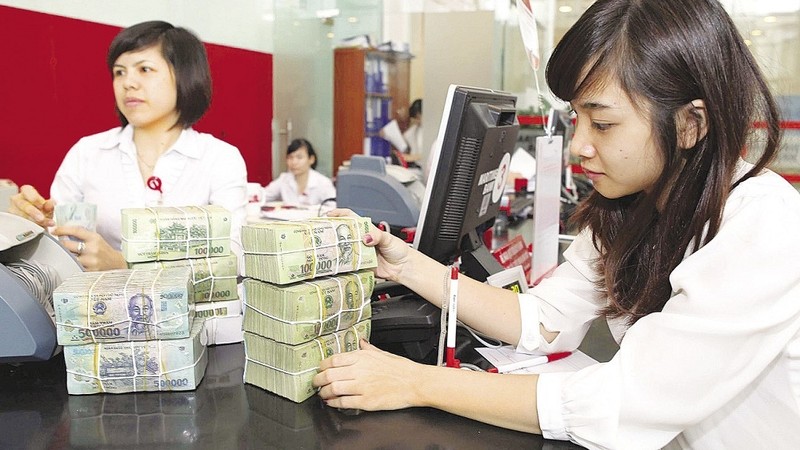In previous years, real interest rates hovered around 2-3%. Although inflation in 2015 fell to a record low, it is a paradox that interest rates did not follow the same direction as inflation. Interest rates currently vary between 6% and 7%, depending on banks.
According to a report by the State Bank of Vietnam (SBV), rates currently stand at 0.8-1% for Vietnamese dong non-term deposits and deposits of less than one month; 4.5-5.4% for terms of less than six months; 5.4-6.5% for terms of 6-12 months and 6.4-7.2% for terms of over 12 months. However, many banks are raising their deposit rates, so lending rates, which now average at 7-10%, are unable to come down further.
In 2016 interest rates will come under greater pressure and will be unlikely to go down for the following reasons. Inflation in 2016 is expected to remain low at 2.5-3% but if commercial banks cut their rates, money from depositors will shift to more profitable investments such as property and stocks. Capital demand for production and business activities will increase due to higher growth expectations. For Vietnam, about 75% of this demand comes from commercial banks.
Vietnam’s budget deficit is constantly high and public debt is growing. In order to make up for the deficit, the government needs to issue bonds both at home and abroad. For now the commercial banking system still holds a large amount of government bonds. In 2016 a strong need to issue bonds will build up pressure on interest rates. Last year the State Treasury had to raise interest rates on five-year bonds slightly but was only able to mobilise less than one fifth of its target, suggesting that the market was still expecting an increase in interest rates. As a result, interest rates will be unlikely to fall in 2016. When interest rates on bonds increase, commercial banks cannot reduce their deposit rates. If they lower rates further, they will fall into the liquidity trap.
Another reason why lending rates will not fall as expected is bad debt. Although the rate of non-performing loans in the entire system has been brought down to 2.72%, the problem has not been resolved completely. In fact when bad debt is cleared from their books and transferred to the Vietnam Asset Management Company, commercial banks still have to set aside 20% for risk provisions. Moreover, Vietnamese banks’ ratios of operating costs to total costs come between 16-23%, while those of regional banks are only 11-14%. The reason is not poor management but bad debt. As such even if the SBV wants lower interest rates, commercial banks are unable to do so.
Regulating interest rates will be a difficult and challenging task in 2016. Most projections suggest that keeping interests at the current level, let alone cutting them, is already a success.
















